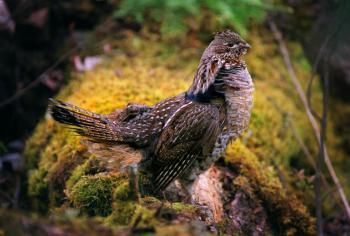Project Area
 The Mille Lacs Wildlife Management Area (WMA) is owned and managed by the Minnesota Department of Natural Resources. This area protects 60.5 square miles (about 39,000 acres) of moist hardwood forest and wetlands in east-central Minnesota. It was established in 1949, mostly from tax-forfeit land. About sixty percent of the WMA is forested, mostly moist red oak - basswood forest. The remainder is wetland, mostly sedge meadow and willow - dogwood swamp. This property is extensively developed for recreational access, with 80 parking areas and about 100 miles of forest roads, hiking trails, and hunter walking trails.
The Mille Lacs Wildlife Management Area (WMA) is owned and managed by the Minnesota Department of Natural Resources. This area protects 60.5 square miles (about 39,000 acres) of moist hardwood forest and wetlands in east-central Minnesota. It was established in 1949, mostly from tax-forfeit land. About sixty percent of the WMA is forested, mostly moist red oak - basswood forest. The remainder is wetland, mostly sedge meadow and willow - dogwood swamp. This property is extensively developed for recreational access, with 80 parking areas and about 100 miles of forest roads, hiking trails, and hunter walking trails.
Management Goals

Wildlife Management Areas (WMAs) are part of Minnesota's state-owned land system and are designed to protect lands and waters that have a high potential for wildlife production, public hunting, trapping, fishing, and other compatible recreational uses. WMAs are supposed to protect valuable habitat and provide opportunities to hunt, fish, trap, and watch wildlife. On the Mille Lacs WMA, primary game species include bear, deer, ruffed grouse, woodcock, and a variety of waterfowl. Forests are managed to promote a mix of different ages with forest openings and edges between existing vegetation types. For the purposes of climate change adaptation, Minnesota DNR staff were most interested in the goals of managing invasive species and ensuring that existing Native Plant Communities and Threatened and Endangered species can persist into the future.
Climate Change Impacts
Challenges and Opportunities
Adaptation Actions
Project participants used the Adaptation Workbook to develop several adaptation actions for the Mille Lacs WMA, including:

